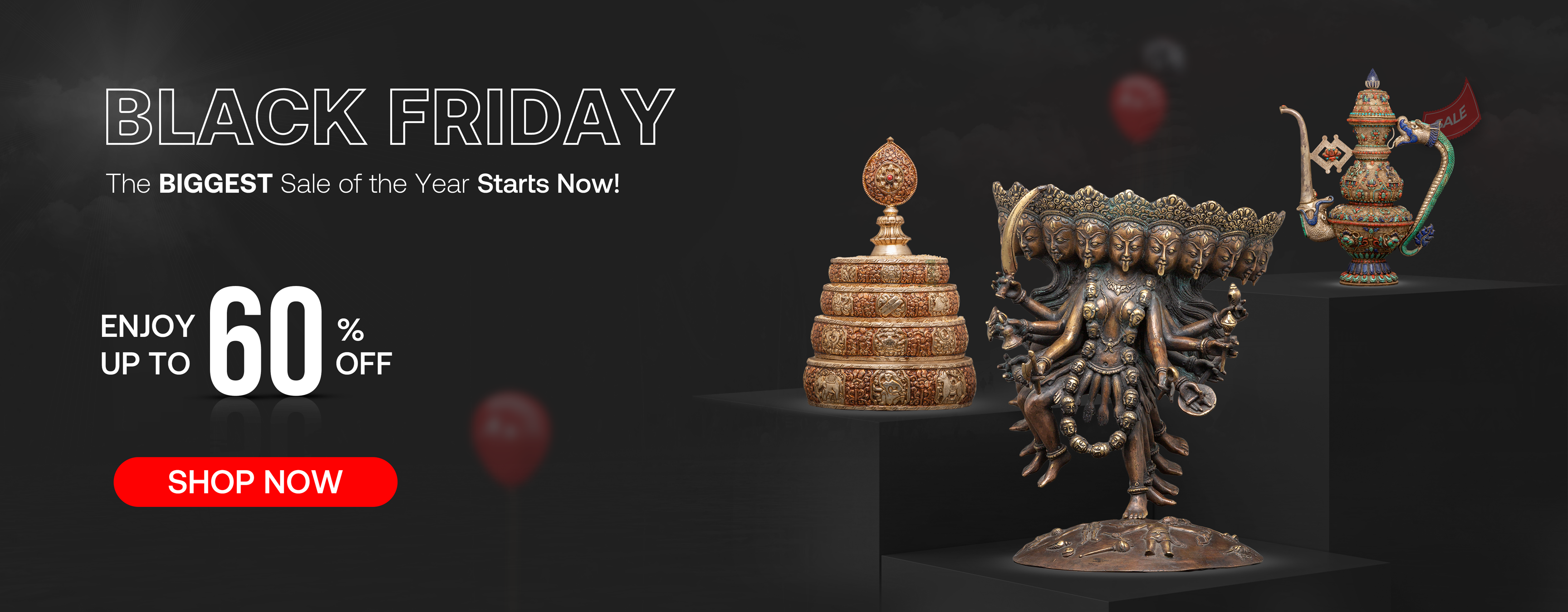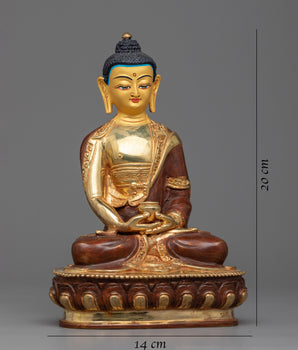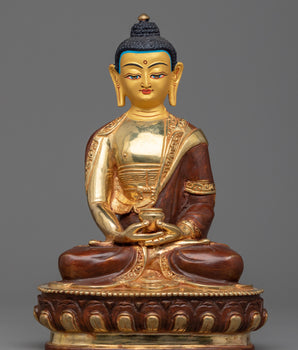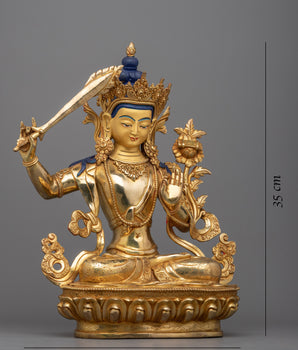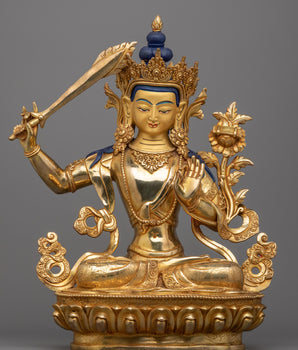The Symbolism, Tradition, and Mindful Practice of Rice and Water Offerings in Buddhist Culture
The offering bowl is a simple artifact that has an important place in temples and households as Buddha Purnima is around the corner. The alms bowl is one of the great Buddhist symbols that represent such things as the Middle Way or noble eightfold path, non-possessiveness, and the cyclic support between the monastics and laypeople, or giver and receiver. Putting rice in a bowl has become a tradition; offering it symbolizes a positive interaction between the one offering and the receiver. This day teaches that giving is the beginning of compassion, and the smallest trifle.
The Alms Bowl: A Vessel of Interdependence

In the early Buddhist tradition, the life of the Buddha and his monks, dressing only in rags and carrying an alms bowl from village to village. Every day, regardless of whether they had shoes on their feet, they would take meals in the street and get rice and other foods from the public. This activity, known as pindapat, was not exactly what the people of today call charity since it involved reciprocity in both a spiritual in a material form. Putting rice into a monk’s bowl was the act of dāna, a virtue, and puñña, which granted one merit. This was a sign of humility, a need to depend on others in the course of attaining enlightenment for the monk.
On Buddha Purnima, the use of rice has a sacred connotation. It celebrates the valorous life of Buddha’s asceticism, his message of letting go, and building a world where sharing is not a loss but a gain. The rice bowl is then resuscitated as a device for communication, a bridge to different strata, the split between self and other, haves and have-nots.
Cultural and Spiritual Significances
This type of offering bowl is of great significance in many places in the sphere of the Buddhist world, that is, India, Nepal, Thailand, Myanmar, India, Tibet, China, and Japan. It is an expression of continuity of tradition from the ancestors and the following of that tradition in the current age of the subjects painted, that is, life, wealth, and spirituality. Pouring rice into a bowl is an act of respect and humility, and devotion, more especially so during sacred occasions like Buddha Purnima. In Thailand and Myanmar, for example, this tradition is observed in the morning alms round, because the people give rice and food to monks, among other things. Offering is more than just a cultural tradition; this is an actual proclamation of interdependence and shared spiritual belonging where giving and receiving are the currency of social and religious life.
Symbolically, the rice offering bowl means a Buddhist offering of giving something up, letting go of something, and being present with others. It is not only about preparing and serving food to the concerned individuals in the form of food, but it is indeed a kind of prayer that helps to develop bodhichitta and merit. The promise returns to the bowl is the ability to create a sacred space of transition, the mundane, and the magical. An offering of a cup of rice in the hand and genuine intention is enough to touch the soul and further the journey. The rice bowl is still, to this day, relevant culturally and symbolically as a symbol of harmony and worship with the middle path at the centre of the teachings of the Buddha.
The Offering Bowl as an Element of Monastic Practice

The offering bowl is a daily tool for monks and nuns in the Buddhist monastic culture, and its chief function is within the alms journey. The Vinaya practice, which is an ethical practice for monks, is to journey for offerings and receive meals with an alms bowl in silence.
According to this code, a monk is prohibited from making requests for individual items, and the request for any sort of dish is not permitted. They just appreciate everything that they are served. It produces much surrender with dependency upon the kindness of other people, and this, in turn, is a reminder of the beauty of the act of giving and accepting what is. Beyond rice offering bowls, certain monks and nuns may bring bowls of water, which are used for offerings of water that represent spiritual nourishment and cleanliness.
The Shape and Material of the Bowl Symbolism
This image is the physical form of the offering bowl that has so many meanings and implications. The circle is the symbol of unity or holiness, of dualism, and of the Perfection of the Teaching. It implies that all the subjects of the chain of phenomena were interrelated, and there was repetition of the events. The utensils which are used in the making of the bowl, or the material, namely brass or copper, or clay, also have a meaning. Brass may represent resilience on the one hand, copper purification, and, on the other, clay humility and its relationship to the earth.
More importantly, the feature of the bowl as lying upside down has always held a wider symbolic meaning where the center or basis of all things is void, and the state of the mind of a meditator is empty, vulnerable, unhooked, and unfettered endeavoring. The rice bowl is one of them; the other important food vessel is the water bowl, which is also used in most of the ritual practices. The bowls preceded in the tradition, the symbols of water and its power to clean up the state of the environment and the practitioner, conceptually, therefore, according to the teaching of the Buddha doctrine, it translates to the need to purify one’s through practice and wisdom.
Ritual Use of the Bowl in Buddha Purnima

Rice offering is an important part of the ritual of Buddha Purnima, or the festival of the full moon, which marks the birth, enlightenment, and Parinirvana of the Lord Buddha. These practices are not unique to a country because they vary from country to country. Some recite mantras and burn candles, and they wish the best regarding their practices, for themselves and others. The performance is ideal at night in the full moon period, which is felt to be exceptionally auspicious as it is during this period that the rule of the moon and powers connected with it are powerful. Besides rice, bowls also contain water before the Buddha or surrounding sacred or religious objects. This duality is manifested because people are not offered physical food only, but they are offered spiritual food as well.
The Offering Bowl in Home Practice

Although the offering bowl is normally used in practice, it can also be used at home, although there are certain restraints applied to its usage at home. It has also been suggested that offering a bowl can be easily incorporated into the act of home practice itself for lay persons. A small sculpture, a candle, an incense stick, and a rice offering plate as some examples of a home Buddhist shrine. It may be flowers, rice, water, or anything that you may present every day or once a week; that is a form of thankfulness, compassion, and patience.
The fact that there is a water bowl as one of these home practices also has great importance because it connotes Purity and the flow of wisdom. Alternatively, the water may be given to point to the need to free the mind and soul from external encumber brushed up to increase clear ideas and serenity. This rite doesn’t need elaborate preparations; what counts is the purity of intention and the attention to detail. In the long run, it develops into a subtle but persistent sign of the soul and convictions.
How to Choose a Rice Offering Bowl
Material:
- Brass and Copper: Strong, non-modern, and can be found in many monasteries. Brass will be adopted to represent the ability to be strengthened when exposed to pressure, and copper to represent purification.
- Clay: Ericka Carey said, Corcoran is vulnerable but can still be near the Earth, and in a simple image.
Size:
- Small Bowls: More appropriate for normal use for personal purposes or in households.
- Large Bowls: Large boat-shaped floats for displays on an altar, an event, or a grand ceremony.
Water Bowls:
- Use products that will not tarnish, and those tend to be items made out of glass, ceramics, or metals (copper or brass).
- They can be simple or fancy, but they should portray the clean and nourishing concept of the practice.
A Moment of Mindfulness

Celebrate Buddha Purnima this year, take five minutes for this body and prepare a simple bowl of rice with love, not as a tradition but as a quiet practice of mindfulness and thankfulness. That little act of offering, whether at home shrine or given to someone in need, ties an individual into a tradition of the compassionate that dates back over 2,500 years.
In the Buddha’s own words:
“The gift of food is the gift of life."
Conclusion
Buddha Purnima’s round moon illuminates not only the sky. It also provides the key Buddhist teachers of compassion, simplicity, and co-relatedness. The free-appearing, yet deep meaning rice offering bowl will become a holy bowl, and the giver and the receiver will unite in an eternal giving exchange spirit. It represents both concrete nutrition and spiritual nourishment, whether consumed in homes or monasteries, whether in grand rituals or little devotional occasions. By even a handful of rice, one enters into the practice of donating and becomes attached to the Buddha’s way, and nurtures the seeds of compassion and mindfulness. On this Buddha Purnima, allow ourselves to all remain conscious of the timeless truth that offering is growth through the simple act of giving happily, humbly, and gratefully.





